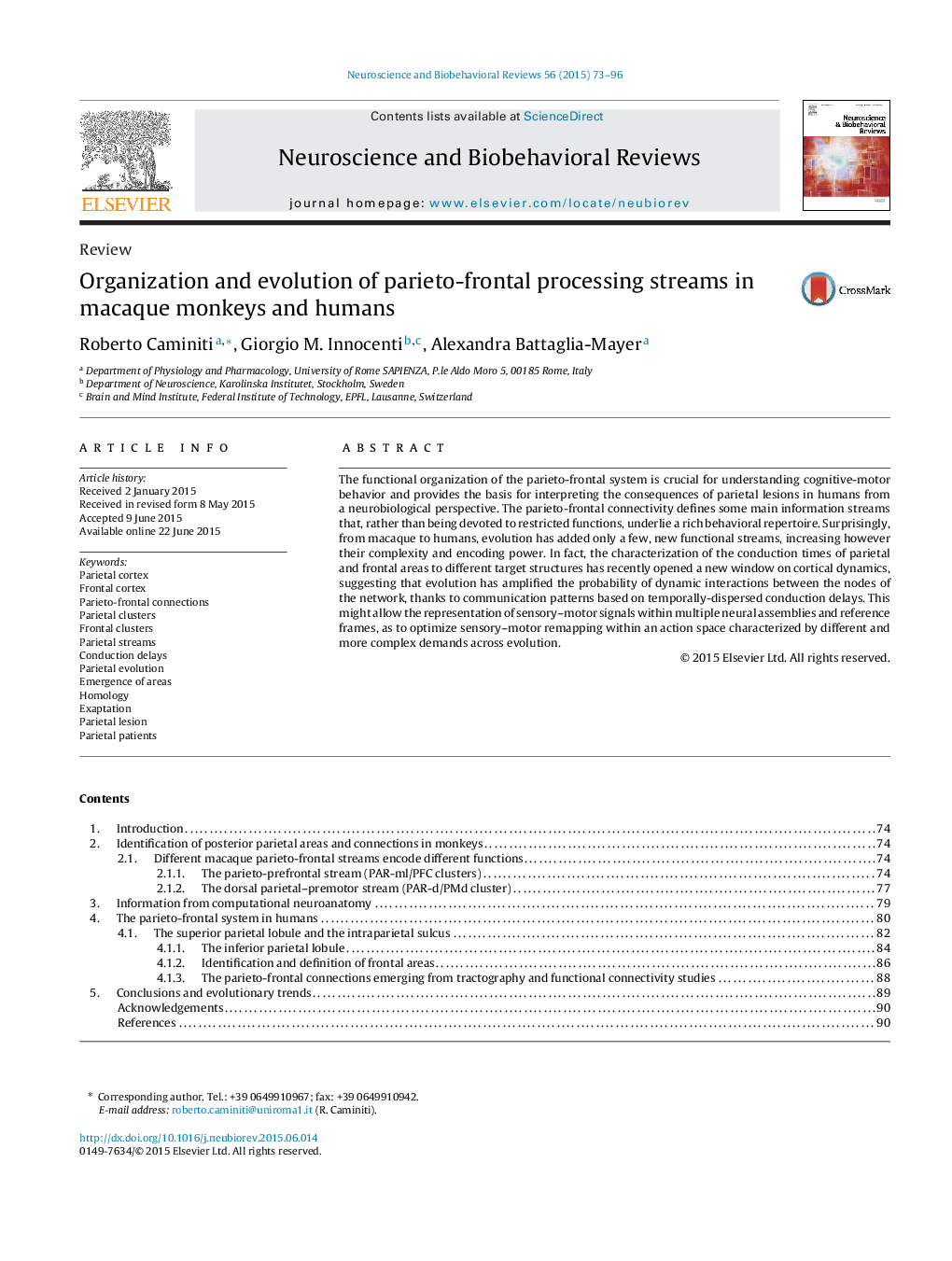| Article ID | Journal | Published Year | Pages | File Type |
|---|---|---|---|---|
| 7303267 | Neuroscience & Biobehavioral Reviews | 2015 | 24 Pages |
Abstract
The functional organization of the parieto-frontal system is crucial for understanding cognitive-motor behavior and provides the basis for interpreting the consequences of parietal lesions in humans from a neurobiological perspective. The parieto-frontal connectivity defines some main information streams that, rather than being devoted to restricted functions, underlie a rich behavioral repertoire. Surprisingly, from macaque to humans, evolution has added only a few, new functional streams, increasing however their complexity and encoding power. In fact, the characterization of the conduction times of parietal and frontal areas to different target structures has recently opened a new window on cortical dynamics, suggesting that evolution has amplified the probability of dynamic interactions between the nodes of the network, thanks to communication patterns based on temporally-dispersed conduction delays. This might allow the representation of sensory-motor signals within multiple neural assemblies and reference frames, as to optimize sensory-motor remapping within an action space characterized by different and more complex demands across evolution.
Related Topics
Life Sciences
Neuroscience
Behavioral Neuroscience
Authors
Roberto Caminiti, Giorgio M. Innocenti, Alexandra Battaglia-Mayer,
